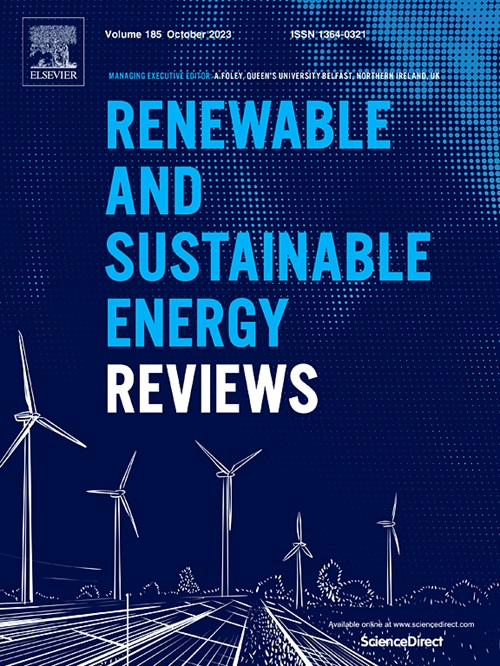Performance energy production with advanced design and prototype floating ducted tidal turbine for small islands
IF 16.3
1区 工程技术
Q1 ENERGY & FUELS
引用次数: 0
Abstract
The urgent need for an energy transition from conventional to renewable energy sources (RE) has become a strategic priority to ensure a sustainable and clean energy supply. In archipelagic nations, renewable energy technologies must be reliable, sustainable, predictable, and environmentally compatible with local wisdom and development goals. Indonesia possesses a total tidal current energy potential of 17.9 GWh, with the Maluku archipelago predicted to have a power density of approximately 4.75 kWh from tidal energy conversion. This study introduces a Floating Ocean Current Power Plant (FOCPP) prototype, incorporating a ducted tidal turbine and a floating moored pontoon system. The platform integrates a low-speed synchronous generator and other electrical components. The prototype was tested in the Haya Strait, Western part of Seram Island, Indonesia, where tidal current speeds reached 2.54 m/s. The results demonstrated a turbine speed enhancement of 1.25–2.65 times, achieving a peak operational period of 19 h per day and producing 72 kWh of energy daily, 2206.4 kWh monthly, and 38.9 MWh annually. These findings suggest that implementing ducted tidal turbines in small island communities can provide a sustainable clean energy solution with minimal greenhouse gas (GHG) emissions. This study highlights the potential for global and national support in accelerating the transition toward renewable energy adoption in remote and underserved regions.
利用先进设计和原型浮动导管式潮汐涡轮机为小岛屿生产高性能能源
本文章由计算机程序翻译,如有差异,请以英文原文为准。
求助全文
约1分钟内获得全文
求助全文
来源期刊

Renewable and Sustainable Energy Reviews
工程技术-能源与燃料
CiteScore
31.20
自引率
5.70%
发文量
1055
审稿时长
62 days
期刊介绍:
The mission of Renewable and Sustainable Energy Reviews is to disseminate the most compelling and pertinent critical insights in renewable and sustainable energy, fostering collaboration among the research community, private sector, and policy and decision makers. The journal aims to exchange challenges, solutions, innovative concepts, and technologies, contributing to sustainable development, the transition to a low-carbon future, and the attainment of emissions targets outlined by the United Nations Framework Convention on Climate Change.
Renewable and Sustainable Energy Reviews publishes a diverse range of content, including review papers, original research, case studies, and analyses of new technologies, all featuring a substantial review component such as critique, comparison, or analysis. Introducing a distinctive paper type, Expert Insights, the journal presents commissioned mini-reviews authored by field leaders, addressing topics of significant interest. Case studies undergo consideration only if they showcase the work's applicability to other regions or contribute valuable insights to the broader field of renewable and sustainable energy. Notably, a bibliographic or literature review lacking critical analysis is deemed unsuitable for publication.
 求助内容:
求助内容: 应助结果提醒方式:
应助结果提醒方式:


